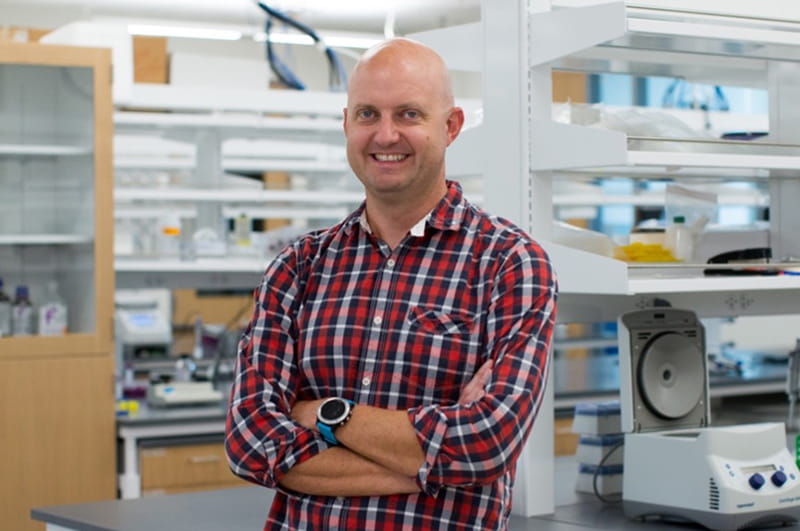411 S. Nedderman Drive
Box 19407, Arlington, Texas 76019-0407
P: 817-272-2776 | F: 817-272-5006
UTA Researcher Aims to Find the Real Bad Guys: Contributors to Aging of Blood Vessels

“Everyone ages. We all get older every day. The question is not if we can stop it, but how do we preserve a lifestyle at a high functioning rate and low burden of disease to longer ages,” and that is the fundamental question that Daniel Trott, assistant professor in the UTA Department of Kinesiology and his lab are trying to address.
Recent findings by Dr. Trott and his partners were published in the Journal of Physiology, one of the premiere research journals in the field. His paper, “T cells mediate cell non-autonomous arterial ageing in mice,” looked at if T cells, a type of cell from the immune system, contribute to aging of the blood vessels. The project was funded by grants from the National Institute on Aging and was conducted in collaboration with researchers at the University of Utah School of Medicine.
They found that in cases where T cells were either cut in half or were non-existent, the mice in their experience showed much better blood vessel function in older ages than those with all their T cells intact.
“We view this investigation as laying the groundwork. We have demonstrated that T cells are an important contributor to the aging of the blood vessel. Now, we are working on being more specific about the type of T cells,” said Trott.
With many types of T cells in the body, his lab is now seeking out answers as to who the real “bad guys” are. “We are now looking at which ones are causing the blood vessels not to work as well,” said Trott.
His lab is also collaborating with human focused researchers in the UTA Science and Engineering Innovation and Research building. His goal is to work with them on exploring if T cell interaction with blood vessels in older people behaves in a similar way to what they have found in mice.
This groundbreaking foundational knowledge is an important step in understanding the fundamental mechanisms of aging in the effort to preserve function and a disease-free lifespan for as long as possible.
Trott’s research article was also selected as the editor’s choice for that edition, in recognition of the important contribution to the science that this research adds. “This is a big honor for me, this journal is one of the top physiology journals. This particular paper is one that I am most proud of, to have other people recognize that is very rewarding.”